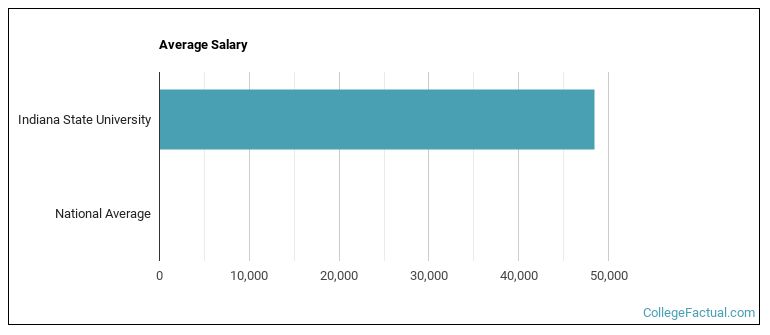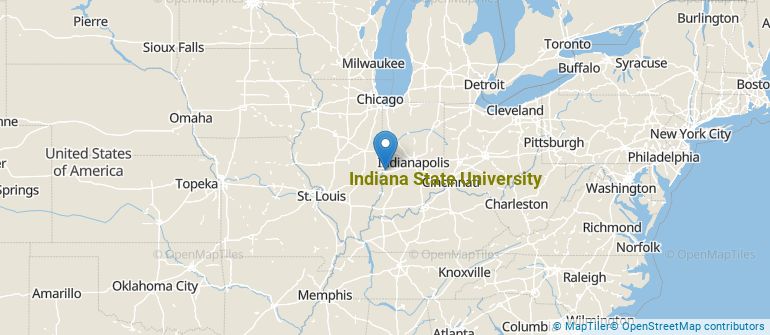 by our College Data Analytics Team
by our College Data Analytics TeamCollege Factual recognizes the best colleges and universities in its annual rankings. These rankings include categories for best overall colleges, best colleges for each major, best value schools, and much more.
Indiana State University was awarded 16 badges in the 2025 rankings. The highest ranked major at the school is general psychology.
Explore the best ranked schools for the programs you are most interested in.
Indiana State is ranked #1,186 out of 2,152 schools in the nation for overall quality on College Factual's 2025 Best Colleges list.
Indiana State also holds the #23 spot on the Best Colleges in Indiana ranking.
With an acceptance rate of 92%, Indiana State University is easier to get into than many other schools. But that doesn't mean you can slack off on your application. Make sure to treat this school like any other when submitting requested materials and documents.
The student to faculty ratio at Indiana State University is about average at 16 to 1. This ratio is often used to gauge how many students might be in an average class and how much time professors will have to spend with their students on an individual level. The national average for this metric is 15 to 1.
In addition to the student to faculty ratio, some people look at what percentage of faculty members are full-time as a sign of how much time professors will be able to spend with their students. This is because part-time teachers may not be be on campus as much as their full-time counterparts.
The full-time faculty percentage at Indiana State University is 70%. This is higher than the national average of 47%.
The freshmen retention rate tells us what percentage of first-year, full-time students choose to continue on to their sophomore year at a particular school. The rate at Indiana State University is 64%, which is about average when compared to the national rate of 68%.
When it comes to finishing their studies on time, those seeking a bachelor's degree from Indiana State have a four-year graduation rate of 30%. This is comparable to the national average of 33.3%
Find out more about the retention and graduation rates at Indiana State University.
During the 2017-2018 academic year, there were 8,938 undergraduates at Indiana State with 7,420 being full-time and 1,518 being part-time.
| $0-30 K | $30K-48K | $48-75 | $75-110K | $110K + |
|---|---|---|---|---|
| $8,743 | $9,497 | $14,661 | $18,479 | $19,920 |
The net price is calculated by adding tuition, room, board and other costs and subtracting financial aid.Note that the net price is typically less than the published for a school. For more information on the sticker price of Indiana State, see our tuition and fees and room and board pages.
Almost 66% of college students who graduated with the class of 2018 took out student loans, but that percentage varies from school to school. At Indiana State, approximately 56% of students took out student loans averaging $6,226 a year. That adds up to $24,904 over four years for those students.

See which majors at Indiana State University make the most money.
Get more details about the location of Indiana State University.

Contact details for Indiana State are given below.
| Contact Details | |
|---|---|
| Address: | 210 N 7Th St, Terre Haute, IN 47809 |
| Phone: | 812-237-6311 |
| Website: | https://www.indstate.edu/ |
| Most Popular Majors | Bachelor’s Degrees | Average Salary of Graduates |
|---|---|---|
| Nursing | 243 | $72,381 |
| Criminology | 135 | $39,769 |
| Teacher Education Grade Specific | 115 | $40,204 |
| General Psychology | 104 | $35,742 |
| Health & Physical Education | 102 | $28,975 |
| Air Transportation | 95 | $40,112 |
| Allied Health Professions | 91 | $33,345 |
| Construction Management | 89 | $72,379 |
| Mental & Social Health Services | 79 | $37,268 |
| Educational Administration | 78 | NA |
Online learning options are becoming more and more popular at American colleges and universities. Online classes are great for students who have busy schedules or for those who just want to study on their own time.
In 2022-2023, 4,867 students took at least one online class at Indiana State University. This is a decrease from the 5,744 students who took online classes the previous year.
| Year | Took at Least One Online Class | Took All Classes Online |
|---|---|---|
| 2022-2023 | 4,867 | 2,524 |
| 2021-2022 | 5,744 | 2,797 |
| 2020-2021 | 7,423 | 3,078 |
| 2018-2019 | 5,617 | 2,638 |
Learn more about online learning at Indiana State University.
If you’re considering Indiana State University, here are some more schools you may be interested in knowing more about.
Curious on how these schools stack up against Indiana State? Pit them head to head with College Combat, our free interactive tool that lets you compare college on the features that matter most to you!
Footnotes
*The racial-ethnic minorities count is calculated by taking the total number of students and subtracting white students, international students, and students whose race/ethnicity was unknown. This number is then divided by the total number of students at the school to obtain the racial-ethnic minorities percentage.
References
More about our data sources and methodologies.